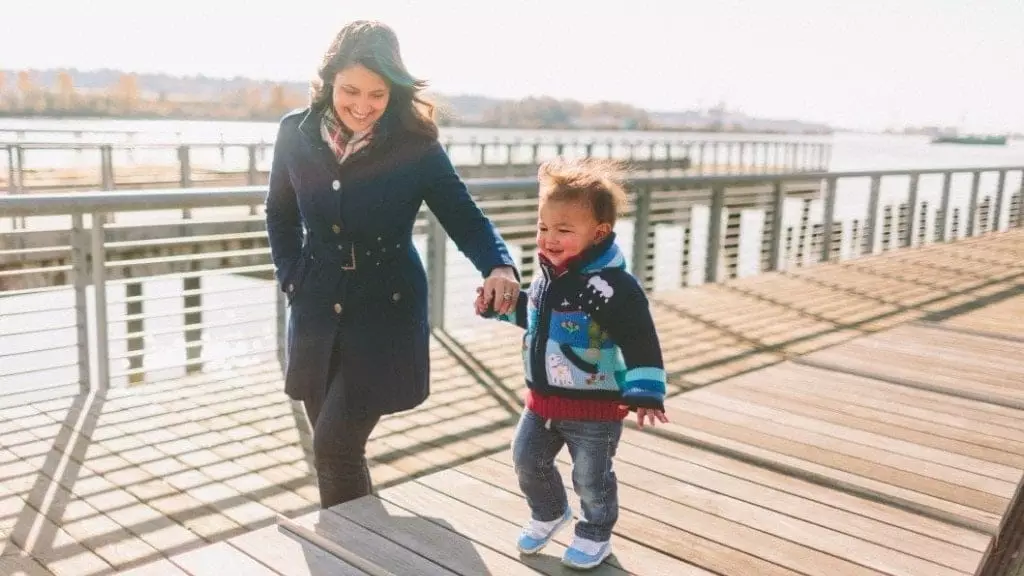There is something uniquely refreshing about a walk taken with young children — be they infants, toddlers, or preschoolers. Not only does stepping outside introduce fresh air and invigorating exercise into the mix, but it also serves as an antidote to feelings of boredom or restlessness that can plague both children and parents. This simple act of walking allows families to break free from the confines of daily life, transforming a mundane routine into an enriching experience. More importantly, research has illuminated that these regular exchanges between parents and their little ones can significantly enhance a child’s cognitive development and social skills, equipping them for lifelong success.
Walking is more than just a physical activity; it’s a chance for parents to engage in meaningful interactions with their children. By integrating educational dialogues into strolls, parents can effectively stimulate a child’s curiosity and foster a love of learning. Herein lies the beauty of walking: it presents an endless array of opportunities for fun educational exchanges that yield both learning and bonding.
One of the most effective ways to nurture a child’s inquisitive nature during walks is through questioning. Instead of solely pointing out sights, parents can ask thought-provoking questions like, “What do you think plants need to grow?” or “What sounds do you hear in the park?” This not only stimulates a child’s critical thinking but also encourages them to articulate their thoughts and explore their surroundings with a keen eye, serving to enhance their observational skills.
Moreover, weaving narratives around what children see, such as the workings of a bakery or the purpose of construction sites, allows children to link abstract concepts to real-world experiences. As they articulate and engage, they strengthen their vocabulary and comprehension skills, essential building blocks for future learning.
Another enchanting aspect of outdoor walks is the potential to heighten a child’s sensory awareness. Children can delight in the simple act of recognition: hear the chirping birds, smell the fragrant flowers, or feel the rough bark of a tree. By prompting them to express what they experience, parents make these observations a playful game, where every sound or sensation becomes a cue for dialogue.
To maximize joy and spontaneity, parents can incorporate unexpected ‘sweet surprises’ along the route. A stop at a local ice cream shop or a playful moment at a park can morph an ordinary walk into an exquisite memory. These moments infuse an element of excitement and anticipation, promoting a love for the outdoors that can last a lifetime.
Exercise transforms into an interactive classroom during walks. Parents can cleverly integrate math concepts by challenging children to count the number of cars that pass or the colors of flowers they see. Engaging children in simple arithmetic while enjoying nature creates a memorable learning experience that feels less like schooling and more like an adventure.
The physical engagement, such as jumping out of strollers or balancing on curbs, further enhances motor skills while reinforcing their confidence in navigating the world. Such kinesthetic learning is crucial; it allows children to connect learning with enjoyment, planting seeds for a healthy, active lifestyle.
Additionally, walks constitute an excellent opportunity for children to explore their community. By discussing various community features—from fire stations to local shops—parents can enhance their child’s understanding of social structures and foster a sense of belonging. Pointing out the significance of different places allows children to cultivate a conceptual map of their surroundings, a crucial element in developing a community-oriented mindset.
As they observe seasonal changes along their path or participate in local events, children grow more attuned to their environment, developing an appreciation for their community and the world at large.
Ultimately, the act of walking with a child expands beyond mere physical benefits. It’s an investment in their cognitive and emotional development, creating a legacy of health, joy, and curiosity that can last throughout their lives. As parents and children traverse their surroundings, they create spaces for connection, imagination, and discovery.
For the little ones, every step is a new discovery; for parents, it’s a chance to guide, teach, and delight in the radiant simplicity of life. So, lace-up your shoes, take a deep breath of fresh air, and embark on a journey of exploration and love—one step at a time.

